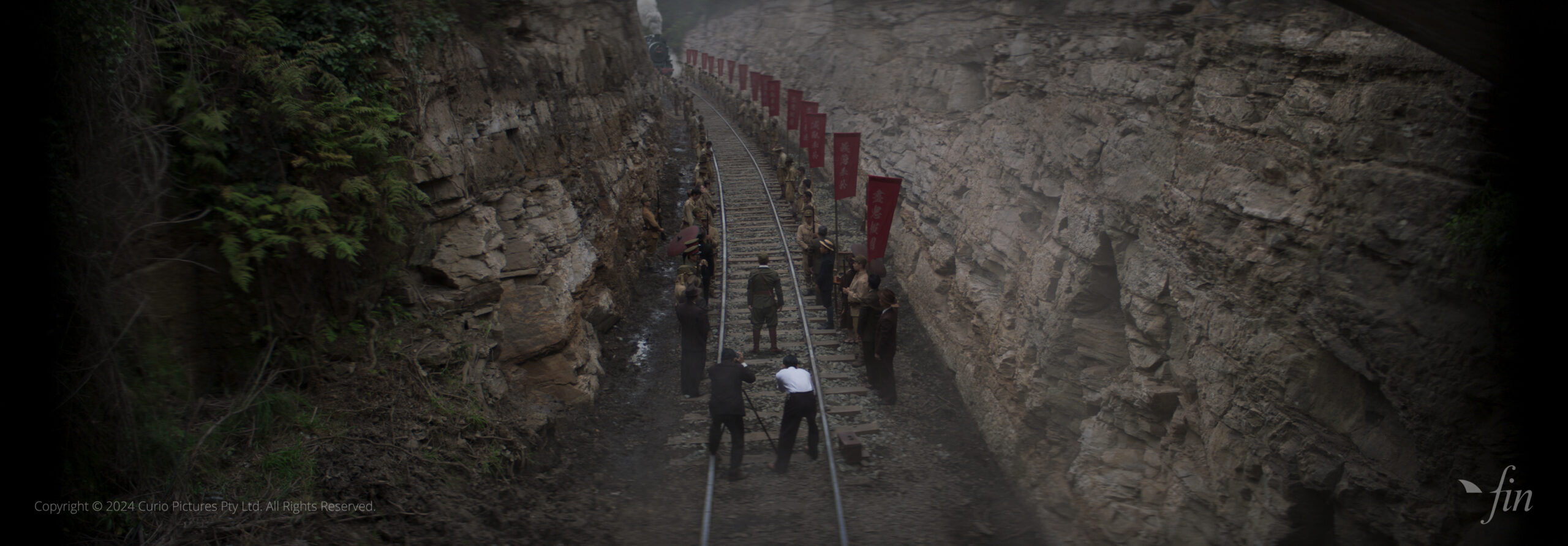Based on Richard Flanagan’s Booker Prize-winning novel, the recent television adaptation of The Narrow Road to the Deep North is a powerful, time-spanning drama brought to the screen by director Justin Kurzel and Sony Pictures Television’s Curio Pictures. Across five episodes, the story moves between three distinct time periods—the pre-war 1940s, World War II, and the late 1980s—each grounded in gritty realism and emotional intensity.
As the sole visual effects vendor on the series, FIN brought both technical expertise and national pride to the project.
“The opportunity to collaborate with Curio Pictures on this fully Australian production was particularly meaningful for us. Having two Australian companies working together with Kurzel to bring this story to life made the project especially rewarding.”
Alastair Stephen, Head of VFX at FIN

In total, FIN delivered 137 visual effects shots, led by VFX supervisor Justin Bromley, who was present throughout much of the shoot. Close collaboration with Kurzel, Curio Pictures and the production team ensured the VFX were responsive and seamlessly integrated into the director’s highly tactile, atmospheric shooting style.
Kurzel’s directive was clear from the outset: the story and the lens come first, not the visual effects. He leaned into handheld camerawork, deep atmosphere, low light, and anamorphic lenses. This meant FIN’s team had to be nimble and responsive, often working with handheld takes shrouded in smoke, fog and shallow focal depth.
Filming took place on the South Coast of New South Wales, with many scenes shot on location in the region’s bushland and coastline. One of FIN’s creative challenges was transforming this Australian landscape into the jungles and infamous railway site of wartime Burma. Through a mix of digital terrain manipulation, 3D foliage, and careful 2D compositing, the team was able to convincingly reshape the terrain while maintaining the integrity of the original cinematography.

A major component of FIN’s work was crowd duplication. With limited extras on set, the team used 2D-plate techniques to expand scenes of prisoner-of-war camps and public gatherings—turning 30 people into crowds of 100 or more, all while maintaining realistic movement and depth.
Another key component of the work was period clean-up. This included the removal of anachronistic infrastructure—gutters, signage, light fittings, modern buildings, vehicles, and entire city skylines—to authentically place the story in its respective eras. Many scenes required environment enhancements to evoke the wartime setting, including the recurring CG train, which was inserted throughout the series to mimic the infamous POW railway used during WWII.
One of the more striking set pieces was the recreation of Tokyo after the bombing, achieved through a haunting 2D matte painting. Other sequences, like the railway cutting and the unveiling of the finished railroad, involved significant set extensions and digital additions—including continuing the tunnel structure and extending tracks for dramatic reveals.
There were also more intimate moments requiring delicate handling, from modesty work to clean up “dream sequence” wires. In one particularly challenging scene involving a beheading, FIN collaborated closely with the props and art department to deliver a seamless transition between actor and prosthetic—adding to the realism without distracting from the moment.
In another example of invisible VFX, FIN extended the height of a hotel and repositioned it digitally to appear closer to the beach—anchoring the building in a shot that demanded both scale and subtlety.
True to its source material, The Narrow Road to the Deep North is based on real stories. FIN’s approach mirrored that ethos—grounded, respectful, and in service of the narrative. The result is a body of visual effects work that is almost imperceptible, yet crucial in building the authenticity and emotional depth of this haunting and powerful series.
